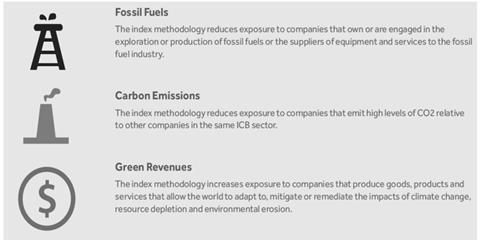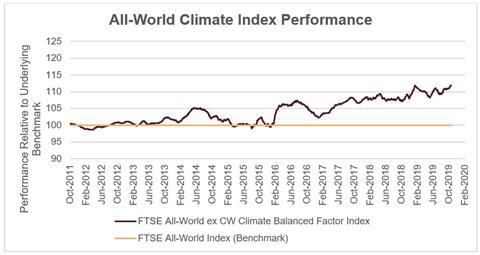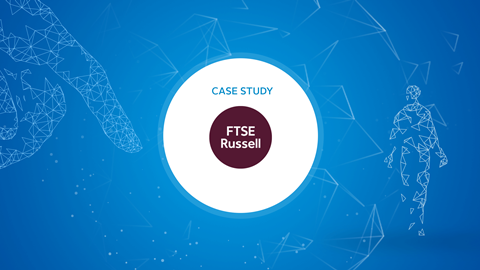- Signatory name: FTSE Russell
- Signatory type: Service provider
- Operating region: Global
- Assets under management: US$15 trillion*
- Assets in passive strategies: US$3.3 trillion**
FTSE Russell has a long-standing commitment to sustainable investment and has been at the forefront of this trend since the launch of the FTSE4Good Index Series in 2001. We actively engage with regional sustainable investment associations and were a founding signatory of the PRI.
Why develop a multi-factor equity index?
In the lead up to the development of the FTSE All-World ex CW Climate Balanced Factor Index (Climate Balanced Factor Index), investors were increasingly demanding ways to incorporate sustainability considerations within portfolios – across asset classes, investment styles and active/passive approaches.
We worked with the HSBC Bank UK Pension Scheme to define a) its required multi-factor exposures and b) the best means of capturing key climate risks and opportunities alongside them. The index provides balanced exposure across targeted factors, and significantly reduces the index-level exposure to carbon dioxide emissions and fossil fuel reserves, while increasing exposure to companies that are generating green revenues.
This was the first time that investors were able to integrate factors and climate considerations into a broad-market, global, equity index strategy.
How we incorporated climate considerations into a multi-factor equity index
The index uses tilts to the constituent weights in the FTSE All-World Index to provide greater exposure to four factors: low volatility, (small) size, quality and value. Alongside the multi-factor exposure, the index incorporates three climate change parameters: carbon dioxide emissions (underweight), fossil fuel reserves (underweight) and green revenues (overweight).
Figure 1. Climate parameters integrated into the Climate Balanced Factor Index

The tilt methodology used to incorporate both the multi-factor and climate exposures is transparent – investors can evaluate how and why individual companies are either over- or under-weighted vs. the benchmark (an advantage over optimised approaches), enabling them to target their stewardship activities.
It is also flexible, allowing investors to adjust the strength of the tilts, which can be useful in better meeting investment objectives. For example, applying a lower strength tilt to the size factor ensures balanced exposure across a diversified combination of return drivers.
The index also excludes companies involved in manufacturing weapons banned under international treaties, such as cluster munitions and land mines.
The index is reviewed with a phased rebalance twice a year.
Figure 2. Relative performance of the Climate Balanced Factor Index to the FTSE All-World Index

Source: FTSE Russell as of February 3, 2020. Past performance is no guarantee of future results. Returns shown may reflect hypothetical historical performance.
Implementation by HSBC bank UK pension scheme
HSBC Bank UK Pension Scheme selected the index as the basis of a fund tracking its defined contribution (DC) scheme default passive equity allocation. This initial allocation of £2bn was followed by a further investment of £2bn from its defined benefit (DB) scheme.
In doing so, it became one of the first pension schemes to adopt a multi-factor investment strategy incorporating climate change protection as part of its default fund. Legal & General Investment Management (LGIM) also invested its own capital in the Fund and the London Stock Exchange Group (FTSE Russell’s parent company) has included it as an option for its DC pension members.
The move sent a signal to the market that large amounts of capital can be shifted into portfolios with sustainability at their core, without sacrificing investment objectives.
References
*Data as of December 31, 2018 as reported on April 1, 2019 by eVestment for institutional assets, Morningstar for retail mutual funds, insurance products, and ETFs, and additional passive assets directly collected by FTSE Russell. AUM data includes blended benchmarks and excludes futures and options. AUM data will not include active and passive assets not reported to a 3rd party source or FTSE Russell. Passive assets directly collected by FTSE Russell have been removed from third party sources to prevent double counting. No assurances are given by FTSE Russell as to the accuracy of the data.
**FTSE Russell. Data as of June 30, 2019 as collected by FTSE Russell. No assurances are given by FTSE Russell as to the accuracy of the data. Total may not sum due to rounding.












